Creating a serene oasis in your backyard is about blending form with function, and one of the most enchanting ways to do this is by integrating vertical gardens into your pergola design. This innovative approach marries the architectural beauty of pergolas with the lush, vibrant life of vertical gardens, transforming outdoor spaces into private havens that captivate the senses and nurture the soul.
Marriage of Structure and Garden
Imagine stepping into your backyard and being greeted by the sight of a pergola, not just structured for shade but alive with the lush greenery of vertical gardens. This fusion not only elevates the aesthetics of your outdoor space but also brings along a myriad of benefits, including enhanced privacy, improved air quality, and a tangible connection to nature. We will find out how this marriage of structure and garden creates an enchanting outdoor living area and why it’s a trend worth embracing in your garden design.
The Basics of Vertical Gardening
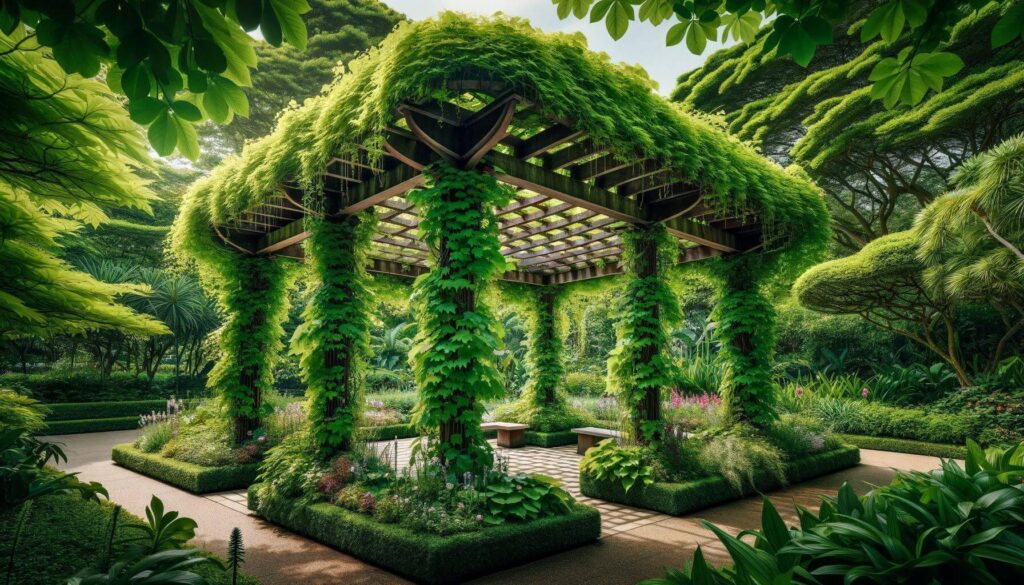
Vertical gardening is a technique that allows you to grow plants on a vertically suspended panel using hydroponics or to attach them directly to a wall or structure. This method is particularly beneficial for pergola areas, where space may be limited but the desire for greenery is limitless.
What is Vertical Gardening?
At its core, vertical gardening is about taking the garden bed and turning it on its side. It’s an innovative way to grow plants, herbs, and even vegetables without the need for extensive ground space. This makes it an ideal solution for adding greenery to pergola-covered patios, decks, and other outdoor areas. Beyond its space-saving benefits, vertical gardening can turn a plain wall or pergola post into a living work of art, adding texture, color, and life to what would otherwise be unused vertical space.
Choosing Structures for Support
Integrating a vertical garden into your pergola design begins with selecting the right support structures. Trellises offer a classic solution, providing a sturdy framework for climbing plants to ascend. Wall planters and hanging systems, on the other hand, can be mounted directly onto the pergola’s posts or beams, allowing for a more flexible arrangement of plants and flowers. These systems not only support the physical growth of your garden but also contribute to the overall aesthetic, enhancing the pergola’s appearance with their green, leafy presence.
By understanding the basics of vertical gardening, you can start to envision how this approach can transform your pergola area into a lush, green retreat. In the following sections, we’ll explore how to select the right plants for your vertical garden, design tips for integrating these gardens into your pergola, and the benefits this green addition can bring to your outdoor living space.
Right Plants for Your Vertical Garden in your Pergola Design

Choosing the right plants is crucial for creating a vertical garden that not only looks beautiful but also thrives. Plants in a vertical setting can experience different growing conditions compared to those in traditional gardens, so selecting species that flourish in this unique environment is key.
Guidelines for Plant Selection
When selecting plants for your vertical garden, consider factors such as light exposure, watering needs, and growth habit. Plants that are well-suited to vertical gardening often have flexible root systems and can thrive with limited soil. It’s also important to think about the weight of mature plants and their compatibility with the structural integrity of your pergola.
Recommended Plants
For aesthetic appeal and environmental benefits, consider incorporating a mix of ferns, succulents, vines, and edible plants. Ferns can add a lush, green backdrop with their varied textures and shades of green. Succulents, known for their drought tolerance and minimal maintenance requirements, offer a diverse range of colors and forms. Vines, such as jasmine or ivy, can create a natural curtain of greenery, enhancing privacy and adding a touch of romance. Edible plants like herbs, strawberries, and certain vegetables can bring a practical element to your vertical garden, allowing you to enjoy fresh produce right from your pergola.
Pergola Design Principles for Vertical Gardens
Creating a visually appealing vertical garden involves more than just selecting the right plants; it requires thoughtful consideration of design elements such as color, texture, and height. These elements can transform your pergola into a dynamic, living piece of art.
Incorporating Design Elements
Color can be used to create mood or highlight certain areas within the pergola space. Consider using plants with colorful foliage or flowers to draw the eye and add visual interest. Texture varies widely among plant species, from the soft fronds of ferns to the fleshy leaves of succulents. Mixing textures can add depth and contrast to your garden. Height is another important element, with taller plants providing a backdrop for shorter ones, creating a multi-layered effect that adds to the garden’s overall appeal.
Balancing Aesthetics and Practicality
While aesthetics are important, it’s crucial to balance them with practical considerations. Ensure that the plants you choose are suitable for the light, temperature, and humidity conditions of your pergola area. Additionally, consider the pergola’s structure when designing your vertical garden. Ensure that the weight of the garden is within the pergola’s load-bearing capacity and that the installation method does not damage the structure.
By following these guidelines for selecting plants and incorporating design principles, you can create a vertical garden that enhances the beauty and functionality of your pergola, turning it into a captivating garden retreat.
Innovative Vertical Gardening Solutions
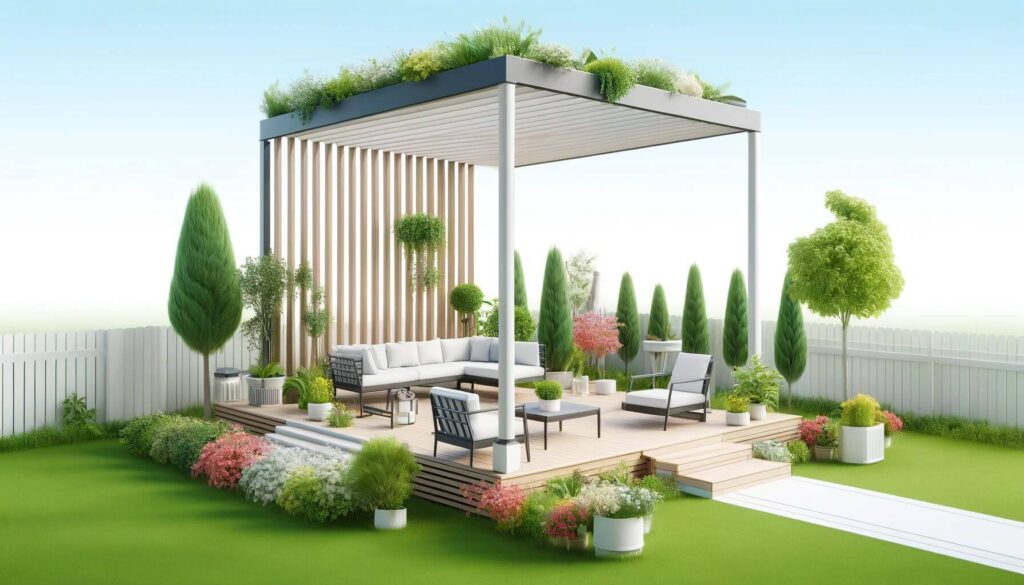
To truly transform your pergola into a lush, vertical oasis, exploring innovative gardening solutions that maximize space and add visual interest is key. From state-of-the-art hydroponic systems to simple DIY projects, there are myriad ways to integrate greenery into your outdoor structure.
Unique Vertical Gardening Systems
Hydroponic towers present a soil-free solution, using nutrient-rich water to nourish plants, ideal for edible herbs and vegetables. These towers not only serve as a striking focal point but also allow for clean, efficient growth of produce. Felt pocket planters offer a versatile and lightweight option, perfect for adding a tapestry of succulents, ferns, or small flowers to your pergola walls. Modular planting systems, which can be customized to fit any space, provide the flexibility to create intricate plant designs, from geometric patterns to free-form landscapes.
DIY Vertical Garden Ideas
For those who prefer a hands-on approach, crafting your own vertical garden features can be both rewarding and creatively fulfilling. Repurposing wooden pallets into plant holders, converting old frames into living art pieces, or hanging rows of potted plants along pergola beams are just a few ways to add a personal touch to your garden. These DIY projects not only enhance the aesthetic appeal of your pergola but also offer the satisfaction of creating something unique for your outdoor space.
Combining Functionality with Aesthetics
A well-designed vertical garden does more than just beautify your pergola; it integrates functionality into the aesthetics, serving practical purposes such as privacy and shade while contributing to the overall charm of the space.
Integrating Vertical Gardens for Beauty and Practicality
When planning your vertical garden, consider how the arrangement of plants can serve dual purposes. For instance, taller plants or fast-growing vines can provide natural screening, creating a secluded retreat. Edible plants not only add greenery but also supply fresh ingredients for your kitchen. Incorporating flowering plants can attract pollinators, adding to the biodiversity of your garden while filling the air with fragrance.
Using Vertical Gardens as Natural Screens
One of the most practical benefits of vertical gardens is their ability to act as natural screens, offering privacy from neighbors and shade from the sun. Strategic placement of vertical gardens can transform your pergola into a private sanctuary, where you can unwind in the seclusion of your own secret garden. Climbing vines and plants with dense foliage are especially effective for this purpose, creating a living wall that enhances both privacy and aesthetic appeal.
By thoughtfully integrating vertical gardens into your pergola design, you can achieve a harmonious blend of functionality and aesthetics, making your outdoor space not just a place of beauty, but a practical, living extension of your home. This approach not only elevates the design of your pergola but also maximizes its use, ensuring that every inch of your outdoor area contributes to your overall quality of life.
Watering and Maintenance Strategies
Keeping your vertical garden lush and thriving requires a tailored approach to watering and maintenance. Given the unique setup of vertical gardens, especially when integrated with pergolas, it’s important to adopt strategies that ensure every plant receives the care it needs.
Best Practices for Watering
Vertical gardens often dry out more quickly than their horizontal counterparts due to increased air exposure. Implementing a drip irrigation system can provide consistent, targeted watering, ensuring that water reaches the roots directly without wastage or overwatering. For smaller installations or DIY setups, manual watering with a watering can or hose attachment that allows for gentle, directed flow is essential. Monitoring soil moisture levels regularly can help you adjust your watering schedule according to the needs of your plants.
Maintenance Tips for Plant Health
To maintain the health and beauty of your vertical garden, regular maintenance is key. This includes monitoring for pests and diseases, which can spread quickly in the close quarters of a vertical garden. Natural pest control methods, such as introducing beneficial insects or using organic pesticides, are preferred to keep your garden eco-friendly. Pruning is also important, not just for controlling plant size but for encouraging fuller, more vigorous growth. Removing dead or dying foliage regularly helps prevent the spread of disease and keeps your garden looking its best.
Enhancing Your Vertical Garden with Lighting
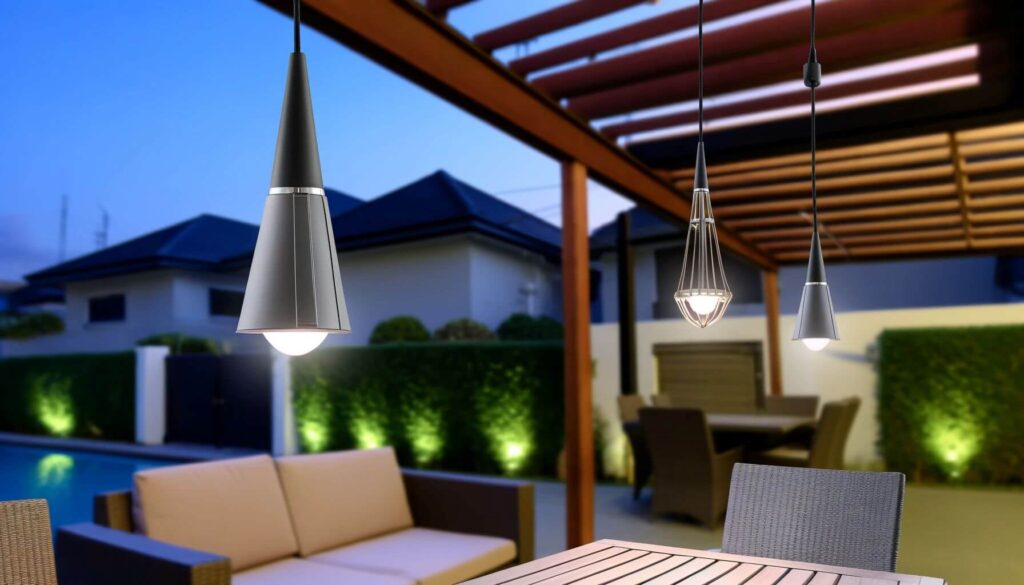
The right lighting can transform your vertical garden from a daytime delight into a magical evening retreat. Incorporating lighting into your vertical garden design not only highlights the beauty of your plants but also extends the hours you can enjoy your outdoor space.
Lighting Ideas for Vertical Gardens
Soft, subtle lighting can accentuate the textures and colors of your garden, creating an enchanting backdrop for evening gatherings. LED spotlights placed at the base of the garden can illuminate plants from below, casting dramatic shadows and showcasing the garden’s structure. Solar-powered string lights woven through trellises or around planters offer an eco-friendly lighting solution that brings a warm, inviting glow to your garden.
Choosing Weather-Resistant Lighting Fixtures
When selecting lighting fixtures for outdoor use, especially in pergola settings, choosing options that are designed to withstand the elements is crucial. Look for fixtures rated for outdoor use, resistant to water and extreme temperatures. The style of the fixtures should complement both your pergola and the vertical garden, whether you’re aiming for a modern, minimalist look or a more rustic, natural aesthetic. Integrating lighting that matches the theme of your garden not only enhances its beauty at night but also adds to the overall cohesiveness of your outdoor space’s design.
By implementing effective watering and maintenance strategies, your vertical garden will continue to thrive, creating a living tapestry that enhances the privacy, beauty, and enjoyment of your pergola. Adding the right lighting can elevate this experience, turning your garden into a stunning nighttime sanctuary that captivates and relaxes.
Sustainability and Eco-Friendly Practices
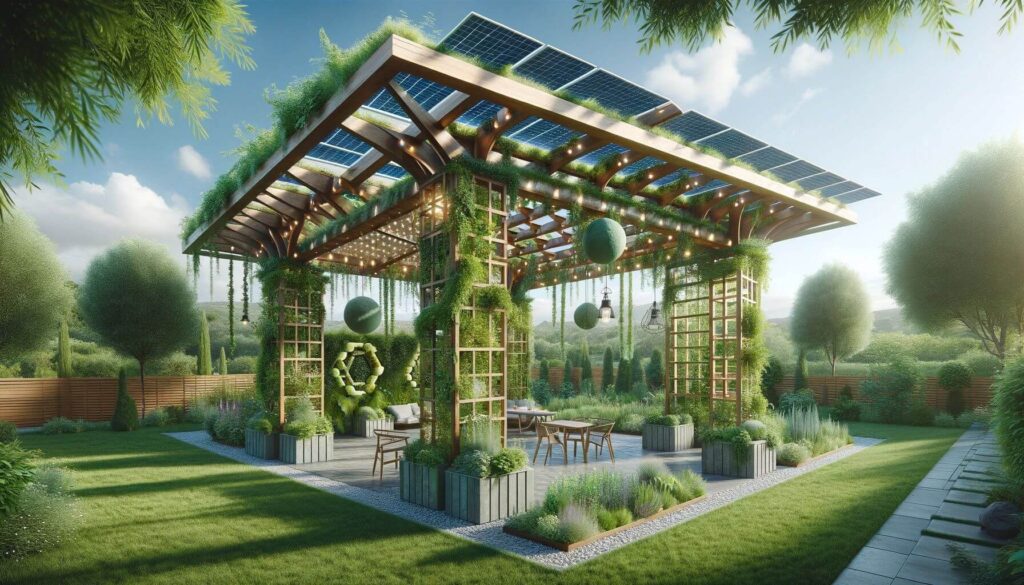
Adopting sustainable and eco-friendly practices in the creation and maintenance of vertical gardens within pergola designs not only contributes positively to the environment but also enhances the natural balance and beauty of your outdoor space.
Sustainable Gardening Practices
Sustainable gardening practices are crucial for minimizing the environmental impact of your vertical garden. This includes selecting native plants that are adapted to your local climate and soil conditions, reducing the need for water and fertilizers. Organic gardening principles, such as avoiding synthetic pesticides and fertilizers, promote a healthier ecosystem within your garden.
Composting and Recycled Materials
Composting organic waste to create nutrient-rich soil for your vertical garden not only reduces landfill waste but also provides your plants with the natural fertilizers they need to thrive. Using recycled materials for planters and other garden features not only adds character and uniqueness to your pergola space but also aligns with eco-friendly principles. Look for opportunities to repurpose items or select materials that have been recycled or are sustainable.
Connection of Beauty to Nature
Integrating vertical gardens with pergolas transforms your outdoor space into an enchanting secret garden that offers privacy, beauty, and a connection to nature. This approach not only maximizes the use of available space but also enhances the aesthetic and environmental value of your outdoor living areas.
Embracing vertical gardening allows for personalization and creativity, enabling you to tailor your garden to your tastes and the specific conditions of your space. Whether you’re looking to create a lush, green backdrop, a source of fresh herbs and vegetables, or a colorful floral display, vertical gardening offers a versatile and rewarding way to greenify your pergola.

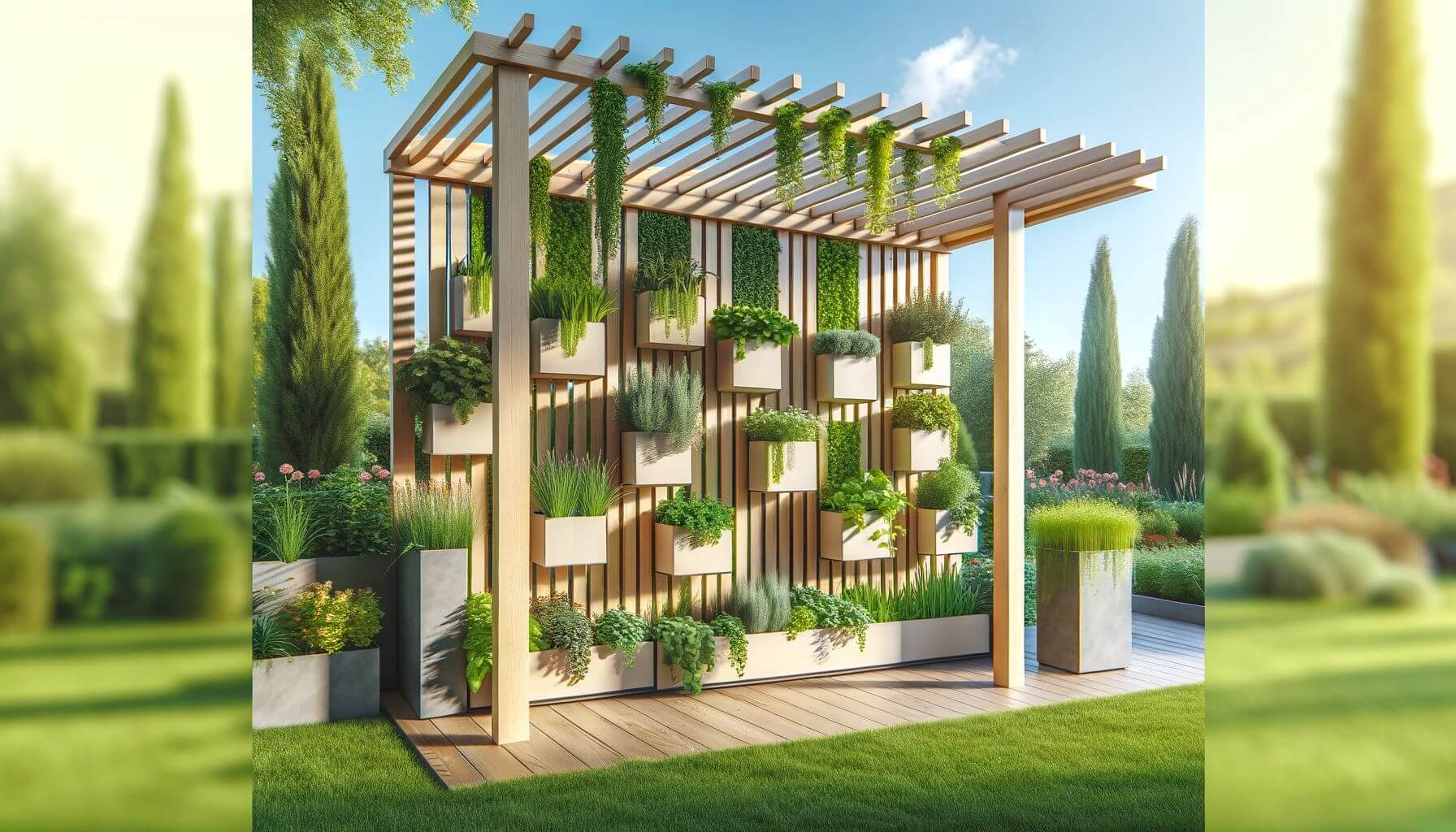
Leave a Reply